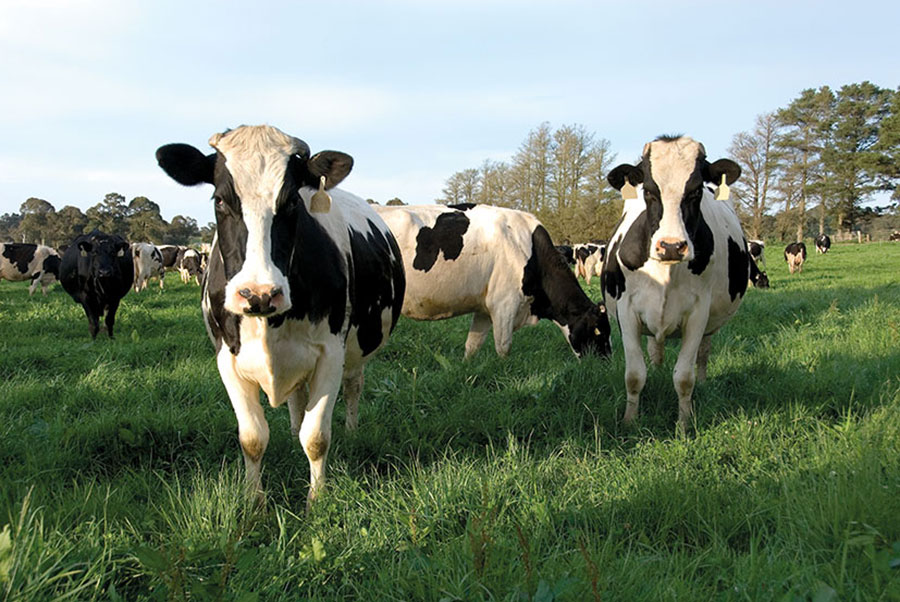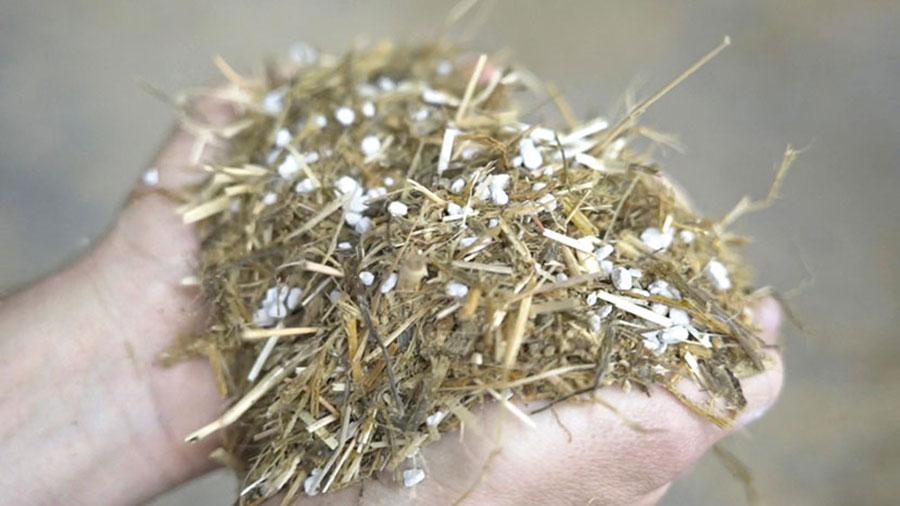Keep a spring in their step: Managing SARA and grass staggers
29th March 2024
As spring grass arrives many dairy farmers are faced with a double challenge in managing cows’ health: sub-acute ruminal acidosis (SARA) and grass staggers. David Bonsall, animal feed expert at Omya, offers a straightforward, cost-effective solution.

“At this time of year many dairy farmers will be glad to be able to turn cows out to graze,” he says, “but spring grass is typically high in sugar, low in fibre and low in magnesium, giving rise to the risk of both SARA and grass staggers.
“This risk can be mitigated by adding OmyaFeed C MgO to the ration. This compacted feed supplement is made from micronised ground calcium carbonate and magnesium oxide. As well as being a highly effective rumen buffer, it also provides the cow with essential and readily available calcium and magnesium.”
What is SARA and how can it be prevented?
SARA is caused by the accumulation of volatile fatty acids (VFAs) in the rumen. As feed is fermented in the rumen, VFAs including acetate, propionate and butyrate are produced. If this happens quickly, as it does with a high sugar low fibre diet, then the pH in the rumen drops. An animal is said to be suffering from SARA if the pH stays low (below 5.8) for a prolonged period each day.
As David Bonsall explains: “When rumen pH is low for long periods of time, it affects the microbial population and can even damage the lining of the rumen. The high sugar and low fibre content of spring grass can cause huge fluctuations in rumen pH which is very damaging to the cow and has an impact on milk production. Sometimes it’s hard to diagnose SARA but farmers can watch out for poor appetites, weight loss, reduced milk production, and lameness.”
SARA can be prevented by adding OmyaFeed C MgO to the ration. In independent trials at IRTA in Spain, cows supplemented with OmyaFeed C MgO spent fewer hours per day with pH lower than 5.8 than those supplemented with sodium bicarbonate, without affecting milk yield or fat content.
What can be done to avoid grass staggers?
Grass staggers is caused by a deficiency of available magnesium in the diet. Sometimes known as grass tetany or hypomagnesaemia, it can take hold rapidly with often no warning. Symptoms include twitching muscles, difficulty walking, and restless or even aggressive demeanour, and can quickly lead to death without veterinary intervention.
David Bonsall points out that cows do not store magnesium so it must be available from the diet. However, spring grass is often very low in magnesium and so supplementation is necessary to prevent grass staggers. “Because spring grass grows so fast, its magnesium content can be as low as 0.1% dry matter. It’s also low in fibre, which means it moves through the rumen more quickly, so whatever magnesium there is in the grass doesn’t get absorbed. The only way to make sure the animals get enough is to provide additional readily available magnesium in the diet.”
The AHDB advises that deficiency will occur in diets with less than 0.4% magnesium. OmyaFeed C MgO contains both calcium carbonate and magnesium oxide which buffers rumen pH and provides readily available calcium and magnesium.

David Bonsall highlights the trial results: “We measured magnesium absorption in dairy cows and found that the absorption difference was 60% higher than with a conventional mix, which is a significant difference. It is also worth pointing out that OmyaFeed C MgO is very palatable so there are no intake issues. The big problem getting magnesium into cows at grass to combat staggers is that many magnesium products are highly unpalatable so the cows won’t eat them.”
OmyaFeed C MgO also provides calcium, which is particularly important for dairy cows. There is around 1.2g of calcium in every litre of milk produced, and a lactating cow producing 30kg of milk per day may require up to 60g of calcium per day to maintain milk production and prevent metabolic disorders such as milk fever. It is generally acknowledged that calcium is more readily available to the cow when provided as a mineral supplement than as part of forage or other feedstuffs.
Mr Bonsall concludes: “OmyaFeed C MgO is proven to both prevent and cure SARA as well as providing readily available calcium and magnesium to the lactating cow. Because of its formulation, it is palatable, breaks down easily on ingestion and is easily incorporated into the feed mix without settling out. Only 130g per cow per day is required, which creates space in the ration, and at only 7p per cow per day, it offers dairy farmers a cost-effective way of managing herd health this spring.
For more information visit the Omya website.

